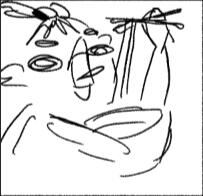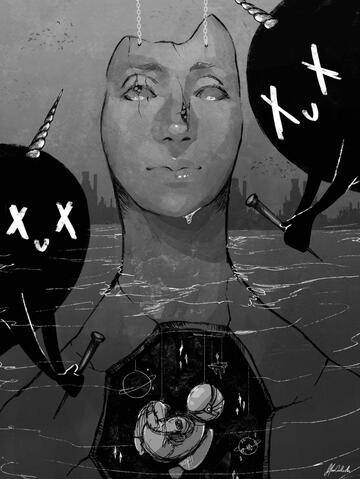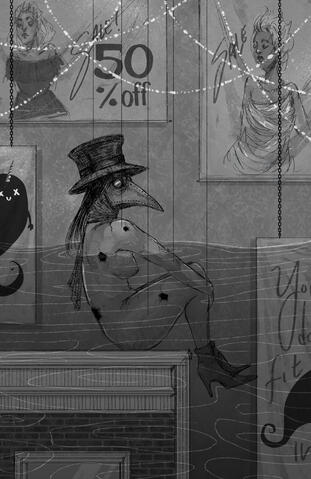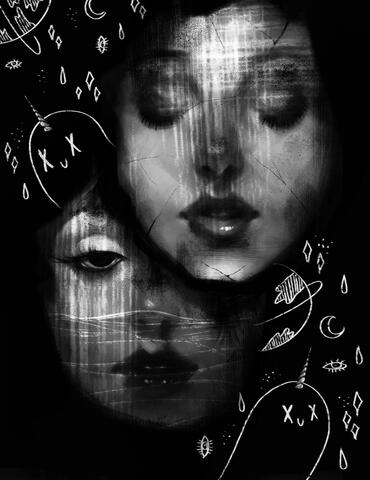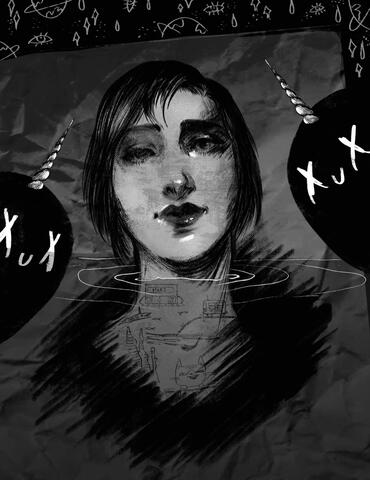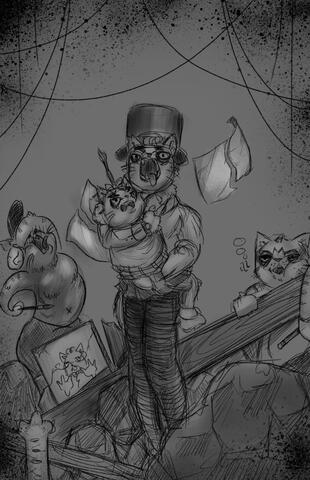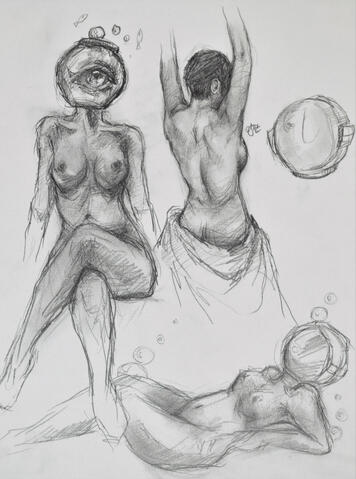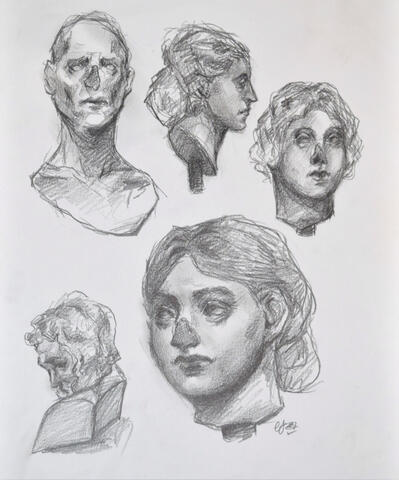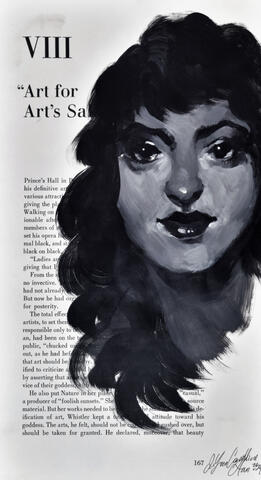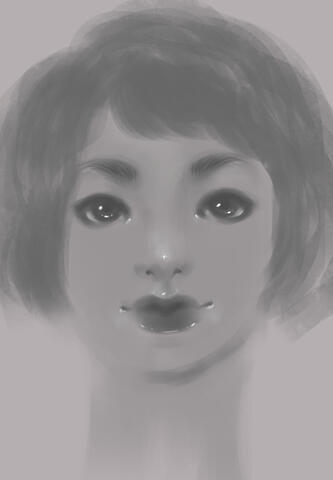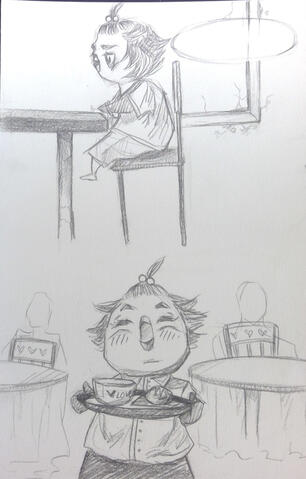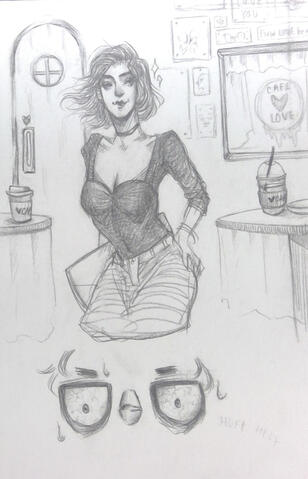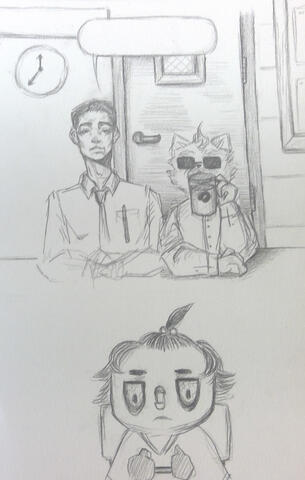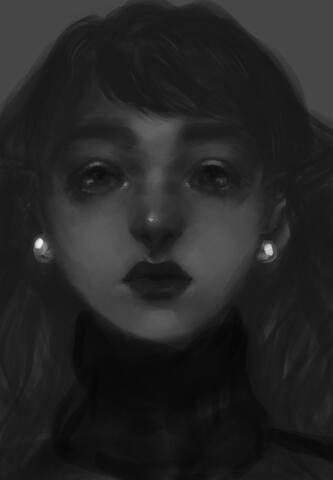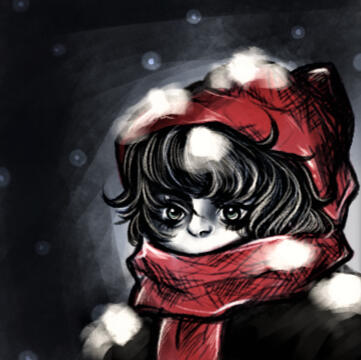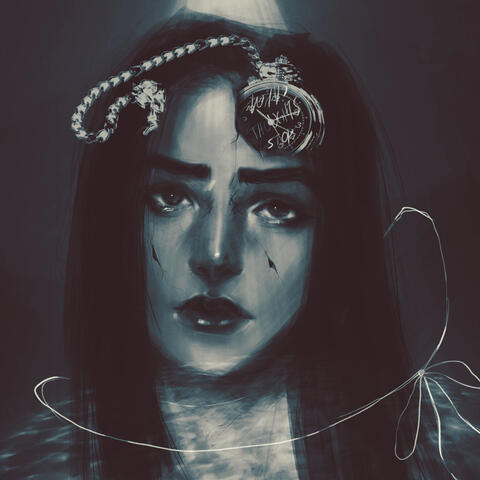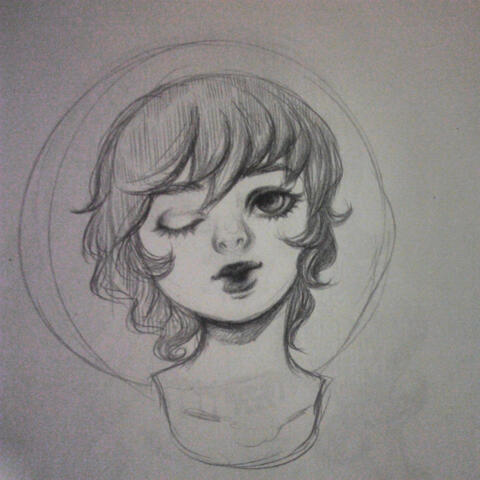
@donquikoats
Illustrator & Sequential Artist
About
Hello! My name is CJ. I am an illustrator and sequential artist based in the New York Metropolitan area. I have a strong passion for storytelling and the surreal.
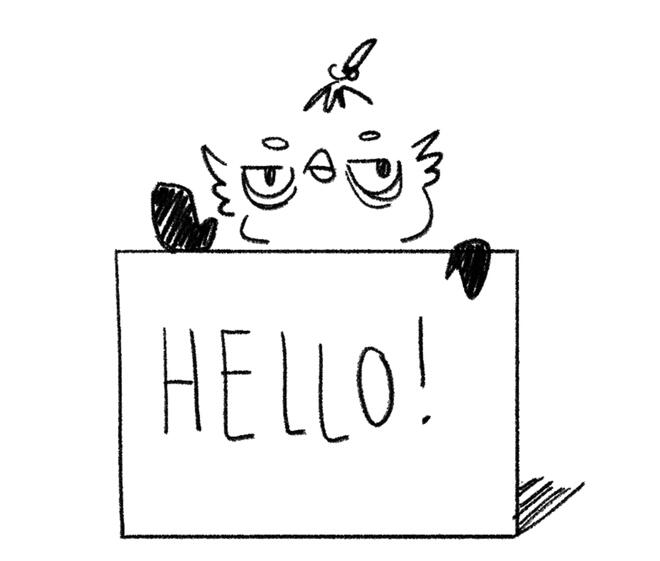
Books. Software. Portfolio Sites. School Advice.
I have included some of the work I have done in high school to show my progress journey with art.
RESOURCE LIST
Books
I know some of these books are really expensive. You can also find a lot of free art books on archive.org hint hint.Also, I could find books like Framed Ink and the Loomis books in my local library so I recommend looking there as well. I also go to my local bookstores and just read the art books there and take notes to study as well.
Charles Dana Gibson - Best of Charles Dana Gibson
Christopher Finch - Norman Rockwell's America
Marcos Mateu-Mestre - Framed Ink: Drawing and Composition for Visual Storytellers (Really good composition book!)
Marcos Mateu-Mestre - Framed Perspective Vol. 1: Technical Perspective and Visual Storytelling
Sarah Simblet - Anatomy for the Artist (this is an amazing book. I HIGHLY RECOMMEND IT.)
Kim Dong Ho - "Amazing Space Drawing"
Paul Heaston - "Perspective Drawing E-Guide) *really dumbs down perspective.
The Morpho books!
Andrew Loomis - "Figure Drawing for All it's Worth" and "Creative Illustration". (Give Loomis' books a look but warning some of his content is really outdated (racist). He has composition and illustration notes that are useful to look at but rn there are better books to look at as well.)
Another huge tip I have is to actually look at photography books. They talk about good composition, color theory, explains how light works, etc. Also there are so many good inspirations and references w/ photography. My fave photographers are Arthur Tress and Gregory Crewdson.
Arthur Tress - Fantastic Voyage
Arthur Tress - The Teapot Opera
Kalton C. Lahue - Petersen's Guide to Architectural Photography
Ansel Adams - The Camera and The Technique
Ansel Adams at 100
Taschen - Eadweard Muybridge The Human and Animal Locomotion Photographs
Barbara and John Upton - Photography 1st edition (*THIS HAS TO BE THE January 1, 1976 VERSION. The earlier versions are better in my opinion.)
Please look at Taschen! They publish a lot of great art books! I have several: Gil Elvgren, Alphonse Mucha, and Eadweard Muybridge to name a few.
ARTISTS
| Artist | Artist |
|---|---|
| Julie Heffernan | Cindy Sherman |
| Kiki Smith | Anne Magil |
| Karla Ortiz | Olivia De Berardinis |
| Mika Rottenburg | Inka Essenhigh |
| Rebecca Leveille Guay | Camille Claudel |
| Emily Mary Osborn | Edwin Austin Abbey |
| Jennifer Packer | Rose O'Neill |
| Tran Nguyen | @canace111 |
| @bwusagi | @awanqi |
| @chacuri | @gawki |
| Yasunari Ikenaga | Faith Ringgold |
| Do Ho Suh | Oliver Laric |
| Ivan Alifan | Edward Povey |
| René Magritte | Esaí Alfredo |
| Thomas Blackshear | Charles Dana Gibson |
| Gil Elvgren | Arthur Rackham |
| Tamara de Lempicka | Dean Cornwell |
| J. C. Leyendecker | Dante Gabriel Rosetti |
| Mark Maggiori | John Singer Sargent |
| Egon Schiele | Gerald Edward Moira |
| Stepan Fedorovitch Kolesnikoff | Maxfield Parrish |
| Tuco Amalfi | Gage Taylor |
| Eyvind Earle | Luděk Marold |
BRUSHES & Textures
Always look at sites like Gumroad and DeviantART for brushes.
PHOTOSHOP BRUSHES
These brushes are Photoshop brushes but you can use Photoshop brushes in Clip Studio Paint.
Michael Yamada > So many good resources on his Gumroad!!!
CLIP STUDIO BRUSHES
Please check these plugins and brushes out!
Intoxicate Pencil Set by ×ェ× [Content ID: 1740419]
Graffiti A (落書きかすかす) by うに×××。[Content ID: 1756510]
Artemus Pencil Set by artemus [Content ID: 1758182]
Photoshop_Workspace by arcticdraws [Content ID: 1706995]
TEXTURES
Some great textures you can use for your digital pieces.
Software
I actually started with using Photoshop for painting but I realized I don't want to support a company that makes you rent their programs and makes their programs inaccessible.So here are some very good and free programs! I bought Clip Studio for around $25 when it was on sale so if you have any money to spare I highly recommend it but professionals use the programs I linked below as well. I have multiple drawing software on my computer bc each program has its own pros.
KRITA PAINTER
The best Krita tutorials I used are from David Revoy who just uses free and open-source software and Sara Tepes on YouTube.
Courses you can take
Classes you can take to learn about things like storyboarding and visual development, concept art, coding, etc.
Organizations
| ORGANIZATION | FIELD | COST |
|---|---|---|
| The Animation Story Group | Animation + Union | ☒ |
| Women in Animation | Animation + Job Board | $ |
| Asians in Animation | Animation | ☒ |
| RAD Artist Network | Animation, Concept Art, Writing, etc. | ☒ |
| Lightbox Expo | Animation, Concept Art, Writing, etc. | — |
| Work for Indies | Games + Job Board | ☒ |
| Seattle Indies | Games | ☒ |
| Hitmarker | Games + Job Board | ☒ |
| Hand Eye Society | Games | — |
| Association of Comic Creators | Comic Art | ☒ |
| Society of Illustrators | Illustration | $ |
These organizations have their own discord or website. A lot these orgnizations hosts events, portfolio + resume reviews, host classes, give feedback on your work, etc.
Portfolio Site Building

I've been looking at affordable but good websites to build my portfolio. I looked at WIX, Squarespace, and Wordpress. I was able to learn how to build my own website through my Web 1 class and I coded a portfolio site for myself junior year.I first made a wireframe design of what I wanted my portfolio to look like.




I was able to successfully recreate and code my website to look like my wireframe > cjhan.neocities.org/. And I used Neocities to host my website (html and css files). I noticed that Neocities had a very slow loading time and some images would only half load.So I tried using Squarespace and Wix, but I couldn't successfully recreate what I coded with my original website because you could only use templates. So I moved onto Carrd which allows me to embed code but Carrd can also be limiting because you can't use lightbox and make things like carousels. But one of the big pros is the price point. Features like embedding code and adding contact forms is only $19/year compared with $14/month with sites like Sqaurespace.So what I recommend.
I recommend Carrd and Artstation to use as your portfolio site. I thought Neocities was great bc it's a great place to learn how to code websites but it's not optimal, though you can pay $5/month to make it run better. Also you need to learn how to code and add plugins for Neocities to work. Artstation and Carrd are affordable places to create your portfolio. I also seen people use Behance and Adobe Portfolio to showcase their work.Want to Learn how to code? Learning basic HTML and CSS was really useful to me. Here are the websites that helped me.
Art Education Questions
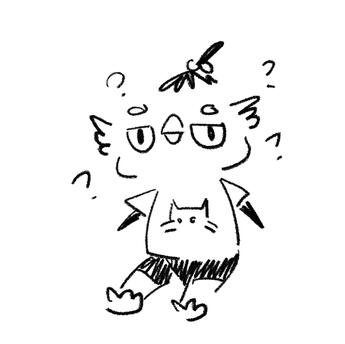
ART SCHOOL?I started off without knowing what career I wanted to pursue when I was in high school. Would I be an artist? An illustrator? I knew about computer animation but I wasn't sure if it was something I wanted to do. At that time I had no idea what visual development and storyboarding was and I learned about that stuff while I was in college.Overall, I didn't know what paths to pursue and because I was unsure of what I wanted to do in the future, I went to the college that was the most affordable option to me and had a good reputation. I did apply and get into different art schools such as Ringling College of Art's computer animation program but it wasn't something I could shoulder and the cost was way too expensive. The school I chose was known for its teaching programs and self-design majors and because I was still interested in animation and illustration, I tried molding the classes I chose to fit the skillsets I need to pursue those industries.I also went into college with the mindset of wanting to create a really good series of work for my portfolio in the future. I took most of the (life) drawing and painting courses my school offered along with classes I thought were useful like Web Design, Animation, Intro to Coding, Motion Graphics, and UX/UI.My thoughts on attending a state liberal arts college are that my education turned me into a generalist. It opened me up to a lot of courses you won't be finding in art schools such as philosophy, sociology, human osteology, and forensic anthropology. I thought these courses would be useful for me in understanding the world better and people as well. This background would help me as an artist because my purpose in pursuing art is to tell stories.Overall
You don't need to go to art school if you want to be an illustrator or animator. But if you want the connections and a sharper edge in your technical skill I would recommend it but of course, there are other options that are way cheaper!Always RESEARCH, start participating in the events of the industry you want to get into. Also* talk to your professors and talk to professionals in the industry you want to get into. A lot of professors connect students with their first job. Also, it's really nice to have a close group of friends who can help each other out and bounce ideas off of._____________For high school studentsStart your portfolio and do your research in advance during your junior/ sophomore year. During high school, apply to art contests like the Scholastic Art and Writing Awards and apply to internships. I worked at an Art Gallery and a local art center as an intern when I was in high school. Think about different paths you want to take sophomore year. Each college wants different things ex. a video on why you want to go to a certain school, a whole sketchbook, certain classes (2 or 3 years of foreign language), etc.If you don't think that you can afford college, ask your guidance counselor to waive your Common App fees and see if you can get your AP and SAT/ACT test fees waived. I got my Common App. fees waived. Also once you get your acceptance to a certain college, you will be getting a financial aid package of what the college will offer you. Protip - you can always negotiate for more by emailing the college's financial aid office AND you can also get the fee waived you need to pay to enroll into the school. Look for small local scholarships and look at all the scholarship and financial aid awards and programs the colleges you applied to offer.Once you're in college, you need to go to your school's financial aid office and ask if they have any scholarships or loans, my college talked to me about things like Parent Plus loans. I applied to all the scholarships and art contests my school hosted Freshman year and I got them all because a lot of people don't apply for them. Remember to apply to your state's financial aid as well along with FAFSA. Apply to be a CA/RA at your school to get your housing fees waived. My school also had a really great program where you do Volunteer work at the school and you could get a scholarship for it but you had to apply to this before you entered the college. I just did volunteering Freshman year at this program bc I did a lot of volunteering during my high school years.So... A summary.
See what you are into.
Research each college. Look at schools both public and private and their programs.
Look for safety and backup schools.
Participate in art contests > Scholastic Art and Writing Awards.
Look at your colleges' financial aid page to look for programs or scholarships that you can apply for.
For each college, there might be programs you can participate or work in and these programs will cover your tuition or living costs. So search this up!
Apply to local scholarships and grants.
Study Abroad, Fellowships, and ResidenciesCheck your school website to see study abroad opportunities and deadlines. Study abroads have an application process with submitting portfolios, recommendations letters, and transcripts.The more affordable study abroad options are actually going to universities that are connected or partnered with your school, then you can use your financial aid money to pay for your housing and tuition costs.Another option to study abroad is through programs like IFSA-Butler. One of my biggest regrets is not being able to study abroad during my junior year. I was accepted to study at Glasgow School of Art but due to COVID, that got canceled. But there are many residencies and fellowships geared towards artists that I can get that study abroad experience.
ART JOURNEY

It's always fun seeing people's art journey so I decided to document and record most of my art journey and show how I improved throughout the years.
College Artworks
My education allowed me to dip my toes into a lot of forms of art from photography (which I'm doing as a hobby but also as work as a museum assistant), graphic design, video art, installation, etc.
High School and before.
My art journey. This is my AP Studio Art portfolio that I created senior year of high school (5). I got really into digital painting the last half of my senior year. *Protip, I actually recommend taking AP studio art your junior year so you have more portfolio pieces senior year.
Some drawings I did. Starting from my junior year work to the end of my senior year.
10th Grade Work. Back then I did a lot of Art Trades and posted on Instagram.
From my Deviantart days. I was part of a group who created morbid and dark kind of art.
Something really really old. Prob around 6th grade. I wanted to be a manga artist after reading Skip Beat, Naruto, and Comic Maplestory. I had a penguin OC named Hervé who I still draw today. I named himself José because he thought that was a fancy name.

Hervé today. He was sort of like my alter ego.
